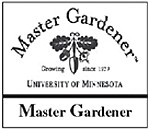July 2, 2004 at 12:43 p.m.
This is the longest day of the year and tomorrow we lose almost a minute of daylight. Where did the summer go?
The rhubarb crop has been excellent, maybe due to the cool wet spring. Remember to stop harvesting rhubarb at the end of June so the roots can store nutrients for the winter. The time to fertilize rhubarb is in the spring.
The asparagus crop started slow but came along nicely. This is another crop where the harvest needs to stop by the end of June. If your patch is anything like mine, you are constantly battling weeds. The wet spring has made it easy to pull the weeds from the patch, but the struggle never ends. If you have noticed some of your asparagas stalks many be deformed, this is probably Shepard’s crook caused by the asparagas beetle. The only way I know of controlling this insect is by spraying. Be sure the product you use states it will control the asparagas beetle and follow the recommendations. If you need to spray, July is good time to do it since you are not harvesting any longer.
Now is the time to prune spring-blooming lilacs. It’s also safe to prune spring flowering shrubs. Pruning after they flower will encourage maximum blossoms for the next year.
It’s still too early to prune to prevent oak wilt. Some say you can start pruning oaks in July, but to be safe, I would wait until next winter. Signs of oak wilt include dead and dying branches. Also, the leaves on those branches turn bronze or tan to dull green. Leaves may also droop, curl or fall from the tree. The infection starts at the tips or outer margins of the leaves and the tree usually dies.
As I drive around it’s easy to spot Dutch elm disease. It starts from the very top of the tree and works its way down. The wilting leaves usually starts on a single branch. Yellowing of leaves and leaf drop follow. Infected branches often have brown streaks under the bark that follow the wood grain.
Now is the time to mulch around your trees and shrubs. Apply a new layer of mulch so the total depth of new and old mulch doesn’t exceed three to four inches. Be sure to keep the mulch several inches away from the trunk of trees and stems of shrubs. Mulching is a good way to keep soil temperatures even, to retain soil moisture and to prevent weed seeds from germinating.
I usually don’t write much on lawns because it’s not one of my strong suites. However, Beth Jarvis from the Yard and Garden Line gave some timely tips on lawns. If your lawn is looking a bit pale, especially if you have sandy soil, it is ok to put down some nitrogen fertilizer. Don’t fertilize your lawn heavily now as the growth rate of temperate-season grasses slows in summer heat.
Crabgrass is at a two to three leaf stage now so go to a post emergence crabgrass herbicide. They contain DSMA and MSMA which often yellow bluegrass if applied under high temperatures and dry conditions (that hasn’t been the problem this spring).
You can still spot treat broad leaf weeds, such as dandelions. Check the label as they often stipulate a maximum air temperature, and follow the label directions.
It is much too late to core aerate, dethatch, or seed. Leave those projects until August and September. Grass will recover from the damage of aeration and dethatching more quickly in cooler temperatures.



Comments:
Commenting has been disabled for this item.